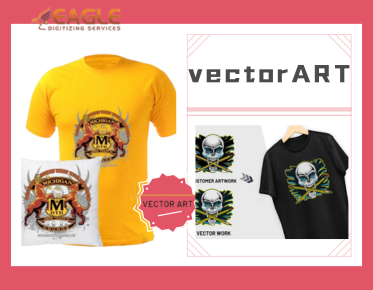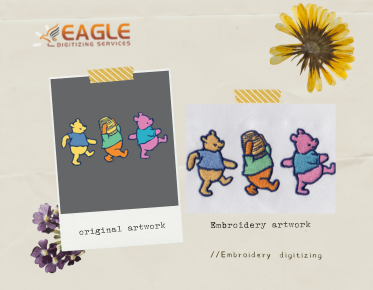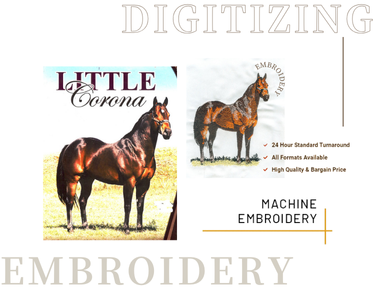How Vector Art Transforms Illustration?
In the realm of comics and illustration, vector art emerges as a dynamic and versatile tool, offering artists unparalleled flexibility and precision in their creative endeavors. Defined by its use of mathematical equations to create scalable and resolution-independent graphics, vector art has become increasingly popular among comic creators and illustrators for its ability to streamline production processes and deliver polished, professional results.
The
Growing Popularity of Vector Art in Illustration
In recent years, vector art has experienced a surge in popularity among illustrators and comic artists alike. With its ability to create smooth, scalable graphics that maintain clarity and detail at any size, vector art has become a preferred choice for digital artists seeking versatility and efficiency in their workflow. From character design to background illustration, vector art offers a wealth of creative possibilities, driving its widespread adoption in the world of comics and illustration.
Why
Vector Art is Valued in Comic Creation
Vector art is valued in comic creation for its numerous advantages over traditional illustration techniques. Not only does vector art offer unparalleled scalability and resolution independence, but it also allows for easy editing and manipulation of artwork, facilitating a streamlined production process. Additionally, vector graphics are highly versatile, enabling artists to create intricate designs with precision and efficiency, making them an invaluable tool for bringing comic narratives to life.
Vector
Tools and Software for Comic Creation
Popular Vector Software for
Comic Artists
Several vector-based software options
cater to the unique needs of comic artists, offering a range of features and
tools specifically designed for comic creation. Adobe Illustrator, Clip Studio
Paint, and Affinity Designer are among the most popular choices, providing
artists with a robust set of tools for sketching, inking, coloring, and
lettering their comics.
Features and Tools Specifically
for Comics
In addition to standard vector drawing tools, comic software often
includes specialized features tailored to the comic creation process. These may
include panel layout templates, speech balloon generators, perspective grids,
and customizable brush sets, enabling artists to create professional-looking
comics with precision and efficiency.
Tips for Choosing the Right
Software
When selecting vector software for comic creation, it's essential to consider factors such as workflow preferences, budget, and compatibility with other tools and platforms. Artists should explore trial versions of different software options, experiment with various features, and seek feedback from fellow artists before committing to a particular tool.
Creating
Characters with Vector Art
Designing Unique Characters
Vector art offers comic artists a versatile platform for designing
unique and expressive characters. By leveraging vector shapes and paths,
artists can create characters with distinct features, proportions, and
personalities, bringing their creative vision to life with precision and
clarity.
Using Vector Shapes to Define
Features
Vector shapes provide a flexible framework for defining character
features such as facial expressions, body proportions, and costume details.
Artists can manipulate vector points and curves to achieve desired shapes and
contours, refining their characters' appearance with precision and control.
Adding Personality with Color
and Details
Color plays a crucial role in character design, conveying personality traits, mood, and narrative context. With vector art, artists can experiment with an infinite range of colors, gradients, and patterns, adding depth and dimension to their characters' designs and enhancing their visual appeal.
Crafting
Environments and Backgrounds
Building Dynamic Backgrounds
with Vectors
In comic creation, backgrounds serve as the backdrop for storytelling,
setting the scene, and establishing mood and atmosphere. With vector art,
artists can craft dynamic backgrounds using a combination of geometric shapes,
gradients, and textures, creating immersive environments that enhance the
narrative experience.
Creating Depth and Perspective
Vector art enables artists to incorporate depth and perspective into
their backgrounds, adding visual interest and dimensionality to their comics.
By manipulating vector shapes and applying techniques such as scaling,
rotation, and layering, artists can create dynamic compositions that draw
readers into the world of the comic.
Incorporating Texture and Detail
Texture and detail play a vital role in bringing comic environments to life, adding richness and realism to backgrounds and settings. With vector art, artists can apply texture overlays, pattern fills, and intricate linework to add depth and complexity to their backgrounds, enhancing the overall visual impact of their comics.
Panel
Layout and Composition
Planning Panel Layouts for
Visual Flow
Panel layout is a critical aspect of comic composition, influencing
the pacing, rhythm, and visual flow of the narrative. With vector art, artists
can plan panel layouts using digital templates and grids, experimenting with
different configurations to achieve optimal storytelling impact.
Using Vectors to Arrange Panels
and Frames
Vector software provides comic artists with precise control over panel
arrangement and composition, allowing them to rearrange, resize, and align
panels with ease. By manipulating vector shapes and paths, artists can create
dynamic panel layouts that guide the reader's eye through the story and
emphasize key moments and transitions.
Techniques for Emphasizing
Action and Emotion
In comic storytelling, artists use visual techniques to convey action, emotion, and drama effectively. With vector art, artists can employ a variety of techniques, such as dynamic posing, expressive linework, and dramatic framing, to enhance the impact of key scenes and moments in their comics, creating a compelling and immersive reading experience.
Typography
in Comics
Choosing Fonts for Dialogue and
Narration
Typography plays a crucial role in comic storytelling, conveying
character voices, mood, and tone through dialogue, narration, and sound
effects. With vector art, artists can choose from a wide range of fonts and
typefaces, selecting styles that complement the visual aesthetic of their
comics and enhance readability and storytelling clarity.
Creating Custom Lettering with
Vectors
For a personalized touch, many comic artists opt to create custom
lettering and typography using vector-based tools. By drawing letterforms and
word balloons from scratch, artists can tailor their typography to match the
style and tone of their comics, adding a unique and distinctive flair to their
storytelling.
Balancing Text with Visual
Elements
In comic composition, finding the right balance between text and
visual elements is essential for maintaining narrative clarity and visual
impact. With vector art, artists can experiment with different text placement
options, font sizes, and styles, ensuring that text integrates seamlessly with
the visual flow of the comic and enhances rather than detracts from the overall
reading experience.
Storyboarding
with Vector Art
Sketching Storyboards with
Vectors
Storyboarding is an essential step in the comic creation process,
allowing artists to plan and visualize the sequence of events in their
narratives. With vector art, artists can sketch storyboards directly in digital
format, using vector shapes and paths to rough out panel layouts, character
poses, and key action sequences.
Adding Detail and Polish to
Storyboard Panels
Once the initial storyboard sketches are complete, artists can refine
and polish their panels using vector-based tools. By adjusting line weights,
adding shading and texture, and refining character designs, artists can bring
their storyboards to life with precision and clarity, laying the foundation for
the final comic artwork.
Presenting Ideas Effectively
with Vector Storyboards
Vector storyboards provide a versatile platform for presenting ideas and concepts to collaborators, clients, and audiences. With digital sharing and presentation tools, artists can easily share their storyboards online, gather feedback, and make revisions in real-time, facilitating efficient collaboration and communication throughout the comic creation process.
Inking
and Line Art Techniques
Creating Clean and Crisp Line
Art
In comic illustration, clean and crisp line art is essential for
defining character features, outlining objects, and conveying detail and
texture. With vector art, artists can achieve smooth, precise lines using
digital drawing tools, ensuring that their artwork maintains clarity and
readability at any size.
Using Vector Brushes for Inking
Vector software offers a wide range of customizable brushes and line
tools specifically designed for inking and line art. From smooth, uniform
strokes to textured and expressive lines, artists can select the perfect brush
for their artistic style and preferences, adding depth and dimension to their
comic artwork with ease.
Adding Depth and Texture with
Line Weight Variation
Line weight variation is a powerful technique for adding depth, dimension, and visual interest to comic illustrations. By varying the thickness and weight of their lines, artists can create emphasis, depth, and contrast, guiding the viewer's eye through the composition and enhancing the overall visual impact of their artwork.
Coloring
Comics with Vector Art
Techniques for Flat Coloring
Flat coloring is a popular coloring technique in comic illustration,
characterized by solid, uniform color fills with minimal shading or rendering.
With vector art, artists can apply flat colors quickly and efficiently using
digital fill tools, ensuring consistency and vibrancy throughout their comic
artwork.
Adding Shadows and Highlights
Shadows and highlights play a crucial role in adding depth, dimension,
and realism to comic illustrations. With vector art, artists can create dynamic
lighting effects using gradient fills, transparency layers, and blending modes,
adding depth and drama to their artwork and enhancing the overall visual impact
of their comics.
Creating Vibrant Color Palettes
Color palettes are an essential aspect of comic illustration, setting the mood, tone, and atmosphere of the narrative. With vector art, artists can experiment with different color combinations, gradients, and textures to create vibrant and dynamic color palettes that enhance the storytelling experience and engage the reader's imagination.
Special
Effects and Visual Elements
Adding Motion and Action with Vectors
In comic storytelling, visual effects such as motion lines, speed
lines, and impact effects are used to convey movement, action, and intensity.
With vector art, artists can create dynamic visual effects using a combination
of vector shapes, gradients, and transparency layers, adding energy and
excitement to their comic artwork.
Creating Visual Effects with
Vector Layers
Vector software offers a range of tools and features for creating
dynamic visual effects, such as blurs, glows, and distortions. By applying
vector-based filters and effects to their artwork, artists can add depth,
texture, and atmosphere to their comics, enhancing the overall visual impact
and storytelling experience.
Enhancing Storytelling with
Dynamic Elements
Dynamic elements such as sound effects, thought bubbles, and visual cues play a crucial role in enhancing the storytelling experience in comics. With vector art, artists can create custom visual elements using digital drawing tools, adding depth, clarity, and personality to their comic narratives.
Printing
and Publishing Comics
Preparing Vector Art for Print
When preparing vector art for print,
it's essential to ensure that artwork meets the technical requirements and
specifications of the printing process. Artists should set the appropriate
color mode, resolution, and file format for printing, and carefully proofread
and review their artwork to ensure accuracy and quality before sending it to
the printer.
Choosing the Right File Formats
Vector artwork can be exported in a variety of file formats, each with
its own advantages and limitations. Common file formats for printing comics
include PDF, EPS, and AI, which preserve the scalability and editability of
vector graphics while ensuring compatibility with printing software and hardware.
Tips for Self-Publishing with
Vector Art
For independent comic creators, self-publishing offers a viable pathway to sharing their work with audiences worldwide. When self-publishing comics with vector art, artists should consider factors such as printing costs, distribution channels, and marketing strategies to maximize visibility and reach for their comics.
Digital
Distribution and Webcomics
Optimizing Vector Art for
Digital Platforms
In addition to print publishing, digital distribution offers comic
creators an opportunity to reach a global audience online. When publishing
comics digitally, artists should optimize their vector artwork for digital
platforms, ensuring compatibility with different devices and screen sizes and
maximizing visual clarity and readability for readers.
Building a Webcomic Presence
with Vector Art
Webcomics have emerged as a popular medium for comic creators to share
their work online, reaching audiences through websites, social media, and
digital platforms. With vector art, artists can create visually stunning
webcomics that captivate readers with vibrant colors, dynamic compositions, and
engaging storytelling, building a loyal fan base and expanding their reach in
the digital realm.
Engaging Audiences with Digital
Comics
Digital comics offer unique opportunities for interactivity, engagement, and multimedia storytelling. With vector art, artists can create immersive digital comics that incorporate animations, sound effects, and interactive elements, enhancing the reader's experience and inviting them to become active participants in the storytelling process.
Vector artwork has emerged as a powerful and versatile medium for comics and illustration, offering artists unparalleled flexibility, efficiency, and creative freedom in their work. From character design and environment creation to panel layout and typography, vector art provides comic artists with the tools and techniques they need to bring their stories to life with precision and clarity. As the digital landscape continues to evolve, the future of vector art in comics looks brighter than ever, with endless opportunities for innovation, experimentation, and exploration.
Whether you're a seasoned professional or an aspiring creator, there's
never been a better time to explore the possibilities of vector art in comics
and illustration. So grab your tablet, fire up your favorite vector software,
and let your imagination soar—because the world of comics is waiting for your
unique voice and vision to shine.



